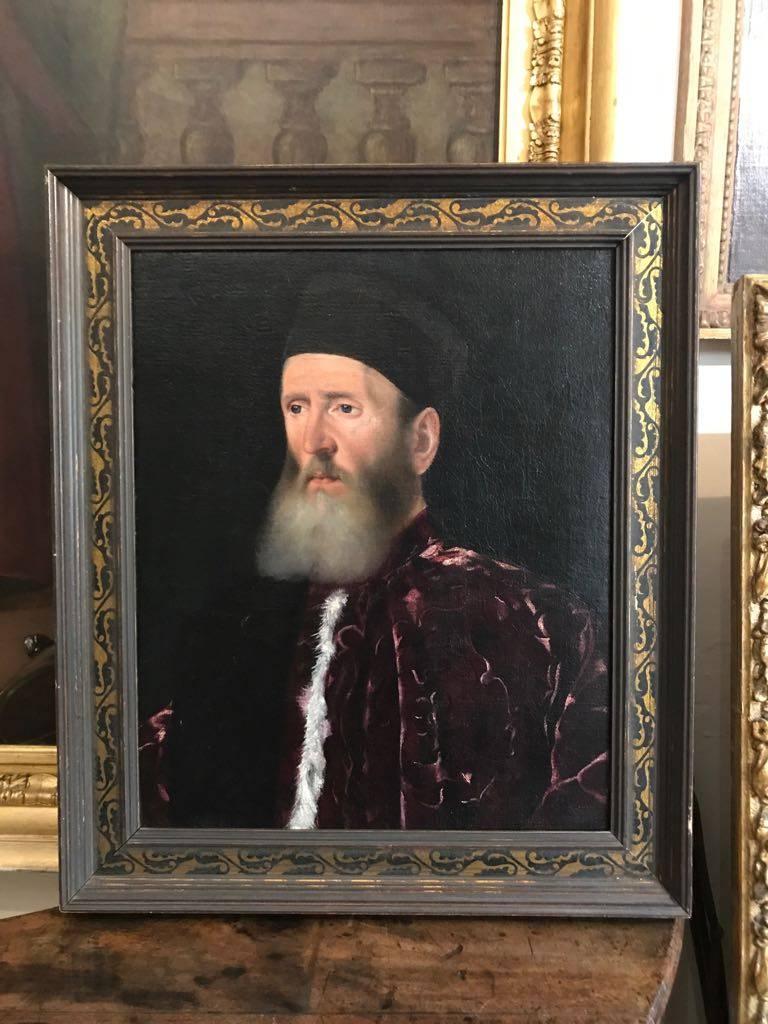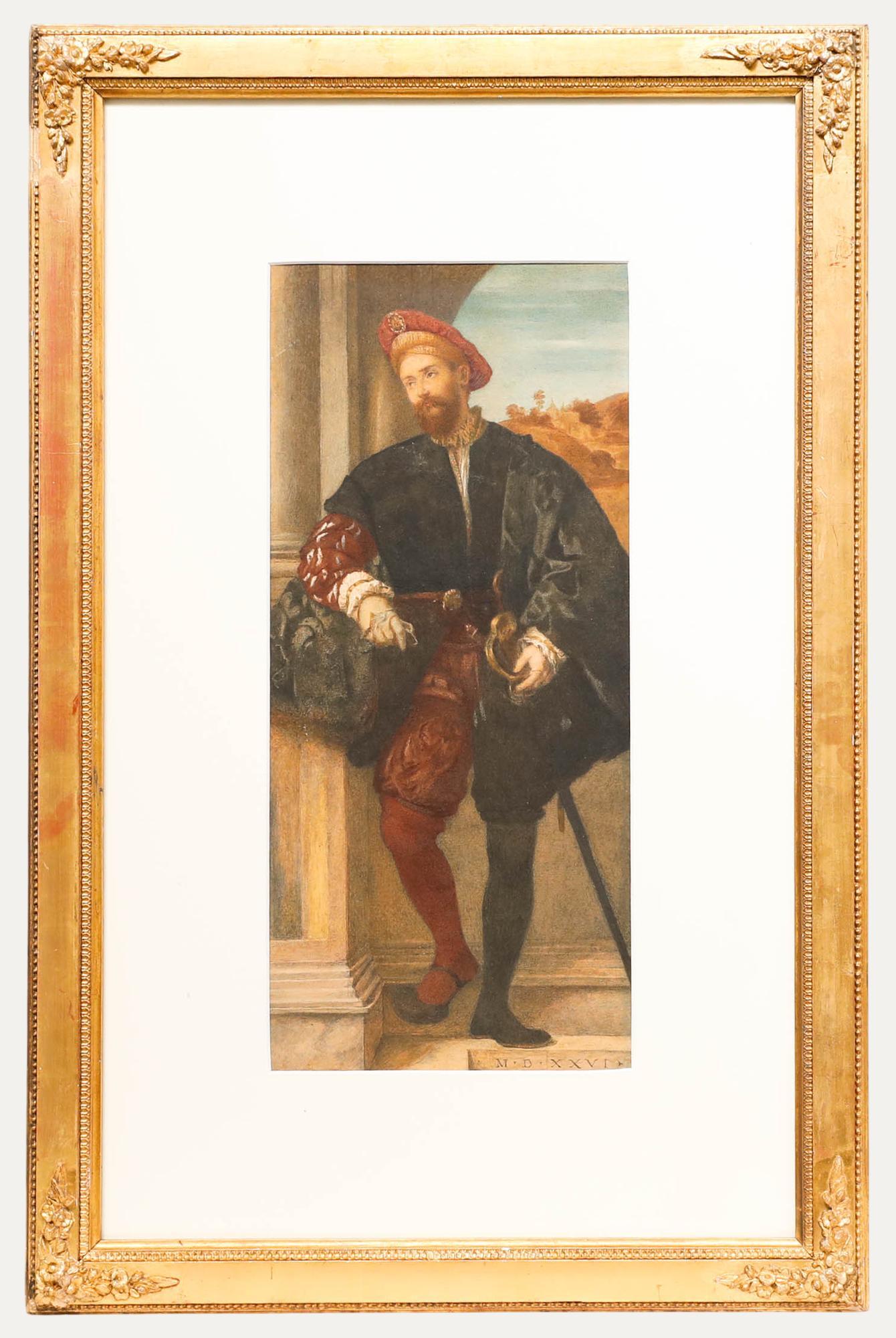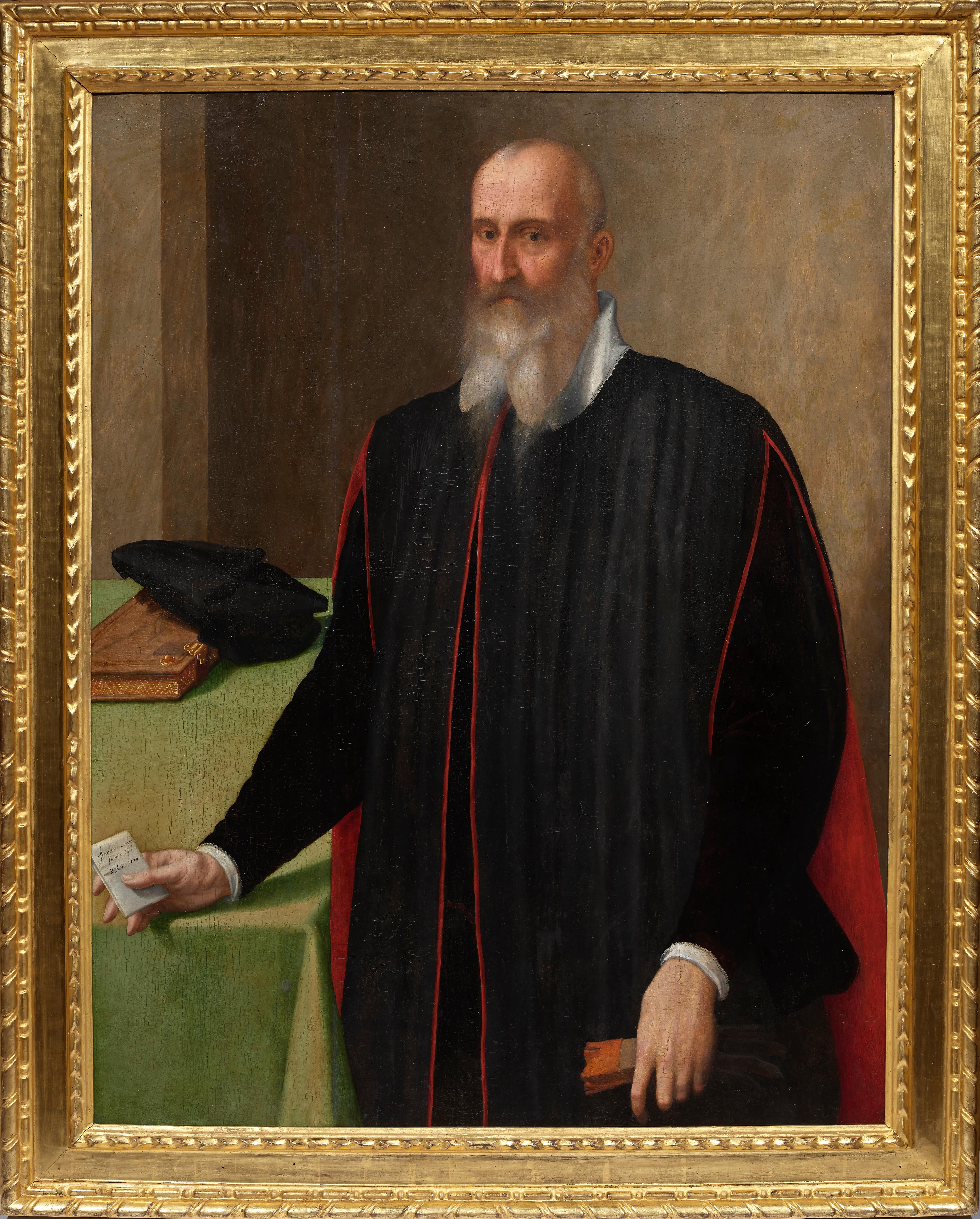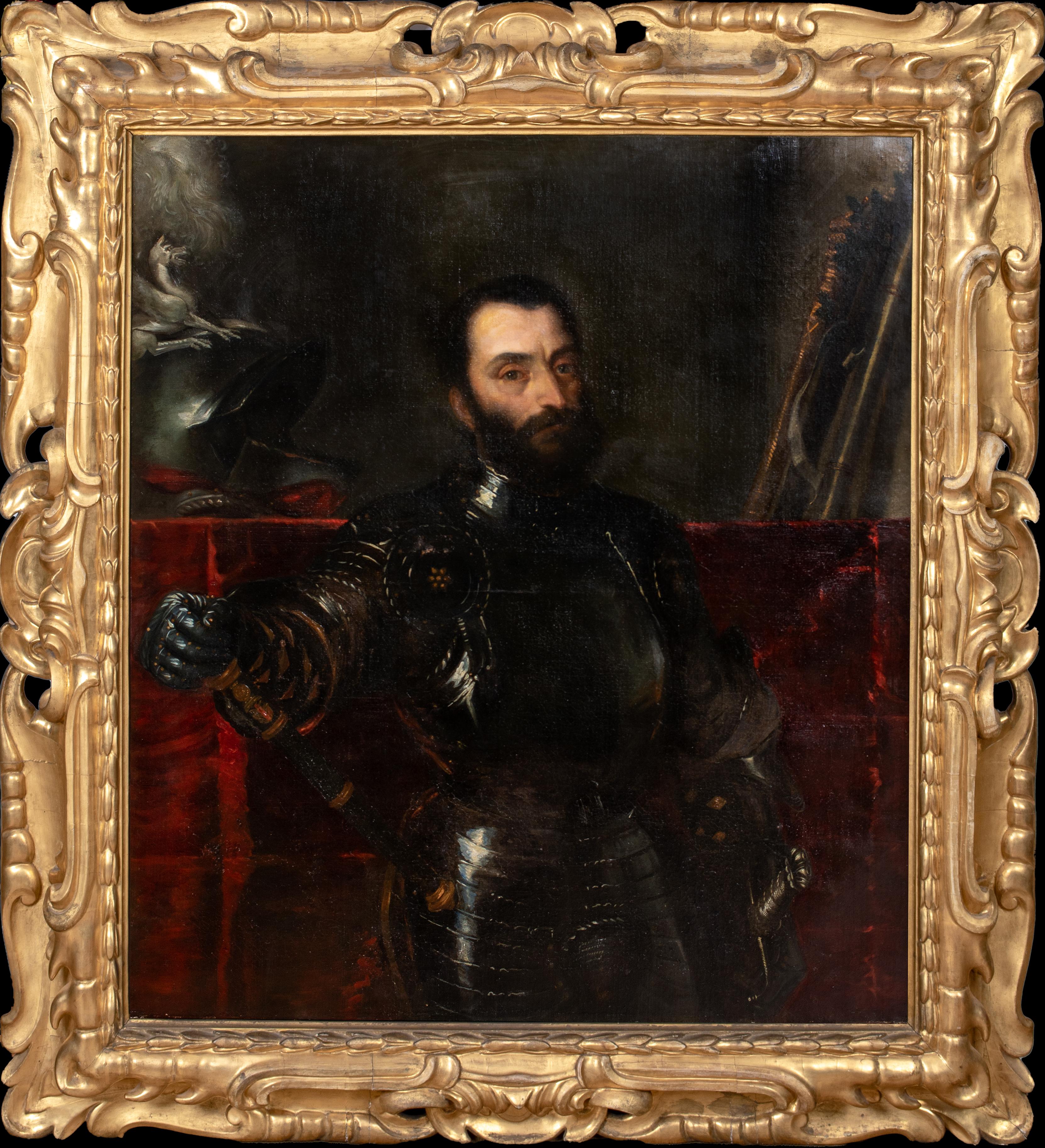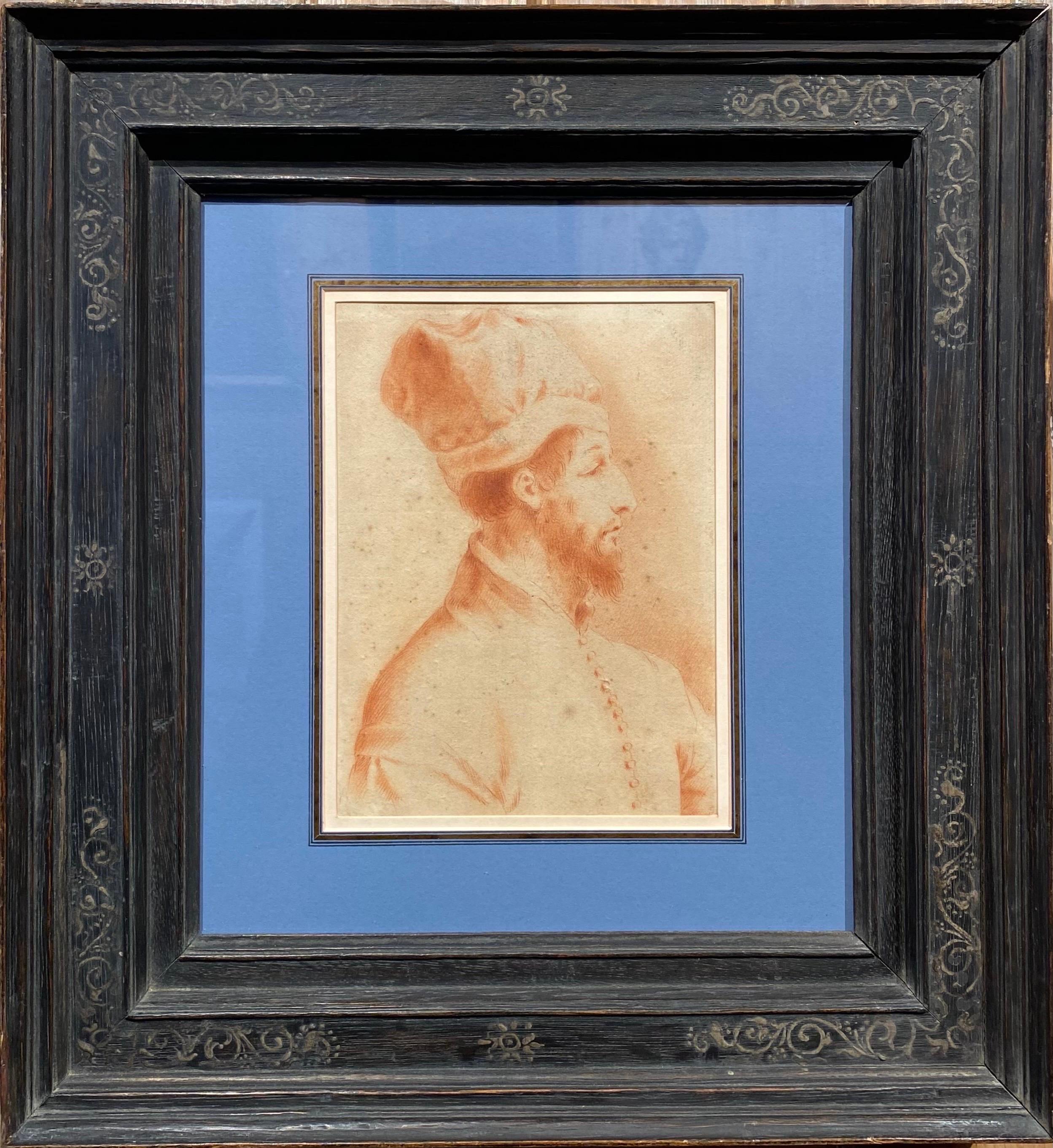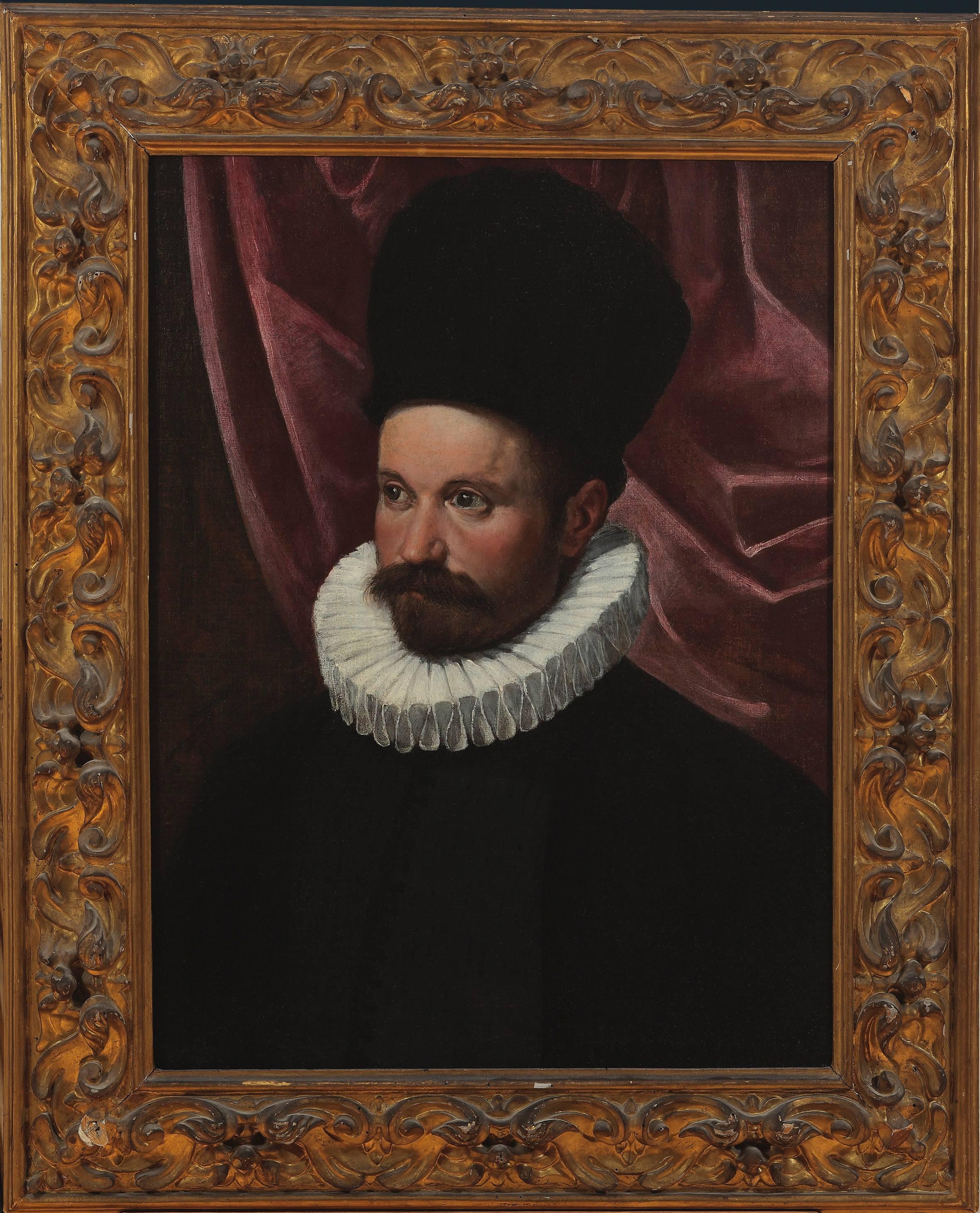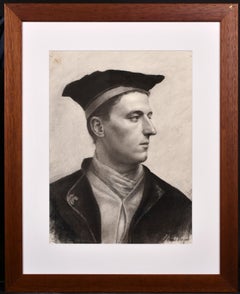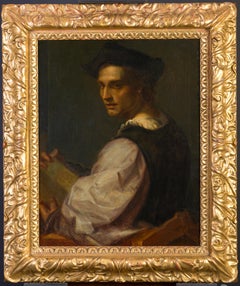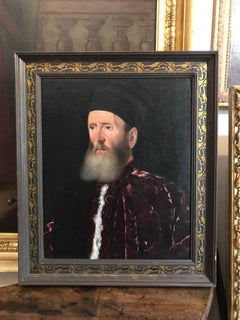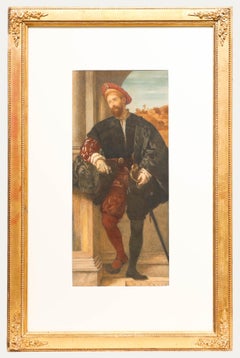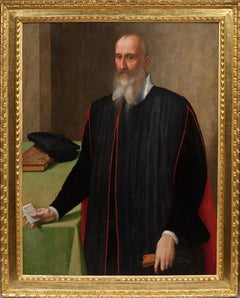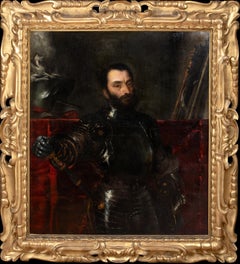Items Similar to Portrait of Tiziano Vecellio ' Titian '
Want more images or videos?
Request additional images or videos from the seller
1 of 8
Joseph ( Arnold ) FreemanPortrait of Tiziano Vecellio ' Titian 'Late 18th Century
Late 18th Century
$3,755.48
£2,750
€3,234.28
CA$5,152.66
A$5,757.24
CHF 3,011.68
MX$70,602.23
NOK 38,483.49
SEK 36,492.55
DKK 24,139.15
Shipping
Retrieving quote...The 1stDibs Promise:
Authenticity Guarantee,
Money-Back Guarantee,
24-Hour Cancellation
About the Item
Joseph Arnold Freeman 1729-1799, was an English painter and draftsman. Freeman's middle name has been acquired through knowledge from an elderly now deceased art scholar, this is unrecorded. However, Freeman was an accomplished copyist and this drawing which dates around the third quarter of the 18th Century was commonly used as an introduction to those potential clients that were to engage Freeman for a commission but not knowing of his talents. This drawing was probably produced within the hour and expresses his ability as a draftsman. Freeman has painted a large number of portraits in oil around the various collages of Cambridge, the dining room at Emanuel College contains no less than 11 of his portrait paintings all copies of earlier works from the King's collections, such as Windsor and Hampton Court. University Colleges displayed portraits of the wealthy patrons of their individual Colleges, however these rare and antique pictures were already within various collections and consequently the copyist Freeman was engaged to carry out the task of reproducing the originals. This would have entailed travelling great distances at the time when travel was fraught with danger. Freeman's work is exemplary as a copyist and Titian's portrait here holding a rectangular pallet is typical of a calling card, the portrait being well known of among scholars in the 18th Century, another of these drawings is sitting in a National Gallery collection a photo of which is enclosed along with the photo of the original self portrait painting, which is holding an oval pallet, and one other drawing of an Infrared image which was sent to the Chairman of the Historical Paper Society who confirmed the date by way of the lines in the paper and the chains. The conclusion is that Freeman displayed his talent to the proposed patron and deliberately changed the shape of the pallet so as noy to be accused of using a prepared drawing, and if drawn in the presence of the patron there is no better way to display his ability. This work is unsigned but is known to be by Freeman through scholarly study and a lifetime of experience in art.
- Creator:Joseph ( Arnold ) Freeman (1729 - 1799, British)
- Creation Year:Late 18th Century
- Dimensions:Height: 8.5 in (21.59 cm)Width: 8 in (20.32 cm)Depth: 1 in (2.54 cm)
- Medium:
- Period:
- Condition:
- Gallery Location:Douglas, GB
- Reference Number:Seller: No. 1371stDibs: LU2373215500902
About the Seller
5.0
Vetted Professional Seller
Every seller passes strict standards for authenticity and reliability
1stDibs seller since 2023
16 sales on 1stDibs
Typical response time: 3 hours
- ShippingRetrieving quote...Shipping from: Douglas, United Kingdom
- Return Policy
Authenticity Guarantee
In the unlikely event there’s an issue with an item’s authenticity, contact us within 1 year for a full refund. DetailsMoney-Back Guarantee
If your item is not as described, is damaged in transit, or does not arrive, contact us within 7 days for a full refund. Details24-Hour Cancellation
You have a 24-hour grace period in which to reconsider your purchase, with no questions asked.Vetted Professional Sellers
Our world-class sellers must adhere to strict standards for service and quality, maintaining the integrity of our listings.Price-Match Guarantee
If you find that a seller listed the same item for a lower price elsewhere, we’ll match it.Trusted Global Delivery
Our best-in-class carrier network provides specialized shipping options worldwide, including custom delivery.More From This Seller
View AllLord David Cecil
Located in Douglas, Isle of Man
Albert Daniel Rutherston 1881-1953, was an English artist who painted, portraits, landscapes, illustrated books and designed stage sets. Two of his brothers were Sir William Rothenst...
Category
1940s Portrait Drawings and Watercolors
Materials
Pencil, Paper
Portrait of John Seymour Lucas
By Alphonse Legros
Located in Douglas, Isle of Man
Alphonse Legros 1837-1911, was a French painter and sculptor, who lived in London from 1863 until his death in 1911. He was a teacher of etching and drawing and became Slade Professo...
Category
1910s Portrait Drawings and Watercolors
Materials
Paper, Charcoal
Proffesor Nevill Coghill
Located in Douglas, Isle of Man
Albert Rutherston 1881-1953, was an English artist, who painted portraits, landscapes, illustrated books and designed stage sets. Two of his brothers were Sir William Rothenstein and...
Category
1940s Portrait Drawings and Watercolors
Materials
Pencil
Portrait of a Sculptor
By Andrea Del Sarto
Located in Douglas, Isle of Man
After Andrea Del Sarto 1486 - 1530, who was an Italian Renaissance painter and draughtsman. Del Sarto worked in Fresco decorating, portrait painting and as a painter of alter pieces,...
Category
Mid-19th Century Portrait Paintings
Materials
Canvas, Oil
Portrait of John Manners later 7th Duke of Rutland
By Margaret Sarah Carpenter
Located in Douglas, Isle of Man
Margaret Sarah Carpenter 1793-1872, was an English portrait painter. She was one of the foremost portrait painters in the 19th Century, she exhibited at the Royal Academy, British In...
Category
1830s Portrait Paintings
Materials
Oil, Panel
Portrait of an unknown sitter thought to be American
By Alphonse Legros
Located in Douglas, Isle of Man
Alphonse Legros 1837-1911, was a French painter and sculptor, who lived in London from 1863 until his death in 1911. He was a teacher of etching and drawing and became Slade Professo...
Category
Early 20th Century Portrait Drawings and Watercolors
Materials
Paper, Charcoal
You May Also Like
16th Century Italian Renaissance Old Master Portrait of a Procuratore
By Jacopo Bassano
Located in London, GB
Jacopo BASSANO (c. 1510-1592, Italian)
Portrait of a Procuratore
Oil on canvas
30 ¼ x 26 inches (including frame)
Provenance: Lucien Bonaparte’s Collection (as Portrait of Doge Priuli, Tiziano); Rich-mond, Virginia Museum, Portrait of Doge Lorenzo Priuli.
The painting is a portrait of a man half-length, on a black background. It is a three-quarter portrait, according to a custom very common in the genre of portraiture in sixteenth century. The man is wearing a decorated...
Category
16th Century Old Masters Portrait Paintings
Materials
Oil
After Moretto - Italian 19th Century Watercolour, Portrait of a Man
Located in Corsham, GB
A fine 19th century watercolour copy of Italian Renaissance painter, Moretto's, Portrait of a Man. Dated in Roman numerals to the lower right (1562). Presented in an ornate gilt effe...
Category
19th Century Portrait Drawings and Watercolors
Materials
Watercolor
Portrait of Senator Bartolomeo Panciatichi by Santi di Tito (1574)
Located in PARIS, FR
This recently rediscovered portrait of Santi di Tito depicts a Florentine senator, with a letter in his hand indicating that the painting was executed in 1574 when the sitter was 66 years old. On the basis of these clues, it is tempting to view it as a portrait of Bartolomeo Panciatichi, who was painted some thirty years before by Bronzino (1503 - 1572). While the treatment of the hands recalls the Florentine tradition of Mannerist portraits, the comparison with Bronzino's portrait illustrates Santi di Tito's search for greater realism, despite the stereotyped composition.
1. Santi di Tito, Counter-Reformation painter and portraitist
Santi di Tito was the great painter of the Florentine Counter-Reformation. He proposed a new artistic language that broke away from Mannerism.
Little is known about his training in Florence (perhaps alongside Bronzino or Baccio Bandinelli), but this period of training enabled him to join the Company of Saint Luke, the guild of Florentine painters, in 1554. Between 1560 and 1564, Santi di Tito spent time in Rome, where he frequented the workshop of Taddeo Zuccari. This stay had a fundamental influence on his work, thanks to the discovery of the late work of Raphael, but also his encounters with the painters Francesco Salviati and Federico Barocci.
Around 1565, Santi di Tito returned to Florence, where he remained until the end of his life, dividing his talents between the creation of important religious paintings and countless portraits. He became one of the city's leading painters, distinguishing himself, in particular, in the creation of large religious compositions in which the spirit of the Counter-Reformation was reflected.
In 1568, Santi di Tito became a member of the Confraternity of Saint Thomas Aquinas...
Category
16th Century Old Masters Portrait Paintings
Materials
Poplar, Oil
Portrait Francesco Maria Della Rovere, Duke of Urbino (1490-1538) 17th Century
Located in Blackwater, GB
Portrait Francesco Maria Della Rovere, Duke of Urbino (1490-1538), 17th Century
after Titian (1488-1576)
Large 17th Century Italian old master portrait of Francesco Maria Della Rov...
Category
19th Century Portrait Paintings
Materials
Canvas, Oil
$13,110 Sale Price
20% Off
Portrait of a Merchant
By Giovanni Francesco Barbieri (Il Guercino)
Located in London, GB
Giovanni Francesco Barbieri Guercino
Italian 1591-1666
Portrait of a Merchant
Sanguine on laid paper
Image size: 12 ¾ x 16 inches (32 x 40....
Category
17th Century Old Masters Portrait Drawings and Watercolors
Materials
Graphite
$19,665
Portrait of a Gentleman
By Ippolito Scarsella (Scarsellino)
Located in New York, NY
Provenance: Suida-Manning Collection, New York
Private Collection
Exhibited: Venetian Paintings of the Sixteenth Century, Finch College Museum of Art, New York, October 30-December 15, 1963, no. 31.
Veronese & His Studio in North American Collections, Birmingham Museum of Art, Oct. 1-Nov. 15, 1972, and Montgomery Museum of Fine Arts, Dec. 5-Dec. 31, 1972
Literature: Robert L. Manning, A Loan Exhibition of Venetian Paintings of the Sixteenth Century, exh. cat. New York 1963, cat. no. 31ill., as by Veronese
Stephen Clayton and Edward Weeks, eds., introduction by David Rosand, Veronese & His Studio in North American Collections, Birmingham 1972, as by Veronese, p. 38 ill.
Terisio Pignatti, Veronese, Venice 1976, I, p. 199, cat. no. A225, II, fig. 908, as attributed to Veronese
Terisio Pignatti and Filippo Pedrocco, Veronese; catalogo completo dei dipinti, Florence 1991, no. 54°, as attributed to Veronese.
Terisio Pignatti and Filippo Pedrocco, Veronese, Milan 1995, II, pp. 517-518ill., cat. no. A 56, under attributed paintings, by Veronese and workshop)
John Garton, Grace and Grandeur; The Portraiture of Paolo Veronese, London-Turnhout 2008, p. 237, fig. 77, cat. no. R16, as workshop of Veronese.
Scarsellino’s art is widely regarded as critical link between the Renaissance and the Baroque styles in Emilian painting; not only was he an important transmitter of the heritage of the Renaissance, but he was also open to innovative ideas, and was one of the earliest to experiment with the trend to naturalism that would become fundamental to art of the new century. Born around 1550, he received his earliest training from his father Sigismondo, an architect and painter; it was probably while working at his father’s side as a youth that he acquired the nickname Scarsellino, or “little Scarsella”. After absorbing the principles of his art in Ferrara and Parma, he went to Venice in 1570, staying for four years and working in the shop of Veronese. In the following decade, his art —especially in terms of its piety and its development of landscape— demonstrates a strong sympathy with that of the Carracci, with whom he worked in 1592-1593 at the Palazzo dei Diamanti in Ferrara. Maria Angela Novelli and later Alessandra Frabetti both propose that Scarsellino traveled to Rome, although such a trip has not been documented; if he did travel to Rome, it probably would have occurred during the years that Scarsellino’s colleagues Agostino and Annibale Carracci were there, that is, beginning in 1595 and until 1609. The last decades of Scarsellino’s career again involve stylistic experimentation, this time in a manner that would bring his work very close to the progressive figurative naturalism of Carlo Bononi and prepare the way for Guercino.
The present portrait of a distinguished gentleman had been long thought to be by Paolo Veronese and was in fact attributed to him by such distinguished connoisseurs as Adolfo Venturi and Wilhelm Suida. The portrait’s style is, however, distinct from Veronese’s, although clearly indebted to it, and the attribution to the young Scarsellino is wholly convincing. The painting would then date from the 1570s – a date confirmed by the costume the subject wears. The puffed hat that appears in the painting had a rather short-lived vogue in the early 1570s. One sees it in Giambattista Moroni’s Portrait of Count...
Category
18th Century and Earlier Baroque Portrait Paintings
Materials
Canvas, Oil
More Ways To Browse
Self Portrait Drawing
18th Century English Portrait
English 18th Century Portrait Paintings
Portrait Self Collage
Antique Portrait Drawing
Titian Paintings
Antique Pallet
Antique Pallets
Sitting Room Painting
Hampton Court
Freeman Oil Paintings
Calling Card
Tiziano Vecellio
All Flower Art
Water Light
New England Art
Rare Prints
Oil On Canvas New York
